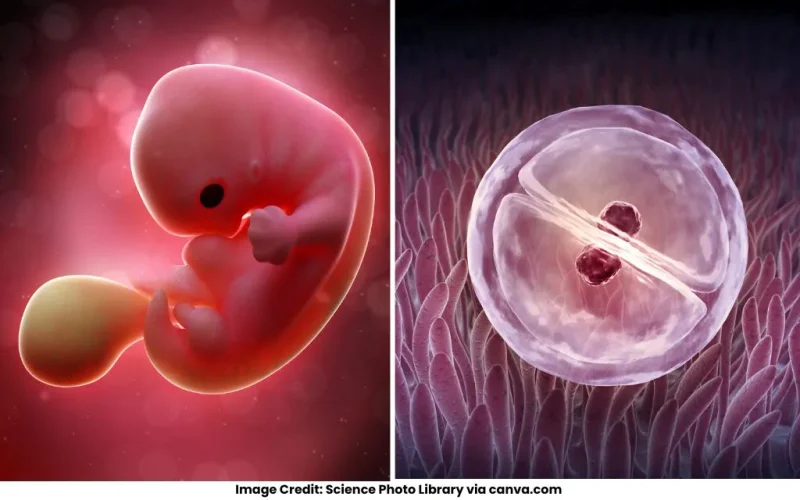A zygote is a single-celled structure formed when a sperm fertilises an egg. It marks the beginning of a new organism and undergoes multiple divisions to develop into an embryo. A foetus, on the other hand, is the stage of development in the womb after the embryonic stage, typically starting from the 9th week of pregnancy. The primary difference is that a zygote is a single cell, while a foetus is a multicellular, more developed stage of the organism.
Complete Answer:
To differentiate between foetus and zygote, it is important to learn the stages of zygote to foetus formation. Here are the different stages:
- Zygote Formation: The zygote is formed when a sperm cell fertilises an egg cell. This single-celled structure contains the complete genetic material (46 chromosomes) required for the organism’s development.
- Cleavage: The zygote undergoes rapid mitotic divisions, forming a multicellular structure called a morula (a solid ball of cells).
- Blastocyst Formation: The morula develops into a hollow structure called the blastocyst, which implants itself into the uterine wall around the 6th day after fertilisation.
- Embryonic Stage: From implantation to the 8th week, the cells differentiate into tissues and organs. This stage is marked by the formation of the heart, brain, and spinal cord.
- Foetal Stage: Beginning from the 9th week of development, the embryo is now called a foetus. During this stage, organs mature, bones develop, and the foetus grows in size until birth.
Differentiate between foetus and zygote:
Here are the key differences between foetus and zygote:
| Foetus | Zygote |
| A foetus is the developmental stage in the womb starting from the 9th week of pregnancy until birth. | A zygote is a single-celled structure formed by the fusion of a sperm and an egg during fertilisation. |
| It is the final stage of prenatal development, following the embryonic stage. | It is the first stage of development after fertilisation. |
| A foetus is large and visibly shaped. It resembles a human form with defined features and organs. | A zygote is microscopic and consists of just one cell. |
| A foetus is a multicellular organism with specialised cells, tissues, and organ systems. | A zygote is a single-celled organism that divides rapidly through mitosis. |
| In a foetus, there are fully formed organs and systems that are present and continue to grow and mature. | In a zygote, no organs or tissues are formed; it is primarily genetic material preparing for cell division. |
| A foetus exists from the 9th week of pregnancy until birth (approximately 38–40 weeks of gestation). | A zygote exists for the first 24–30 hours after fertilisation. |
Common Biology Questions:
 60,000+ students trusted us with their dreams. Take the first step today!
60,000+ students trusted us with their dreams. Take the first step today!


 One app for all your study abroad needs
One app for all your study abroad needs










